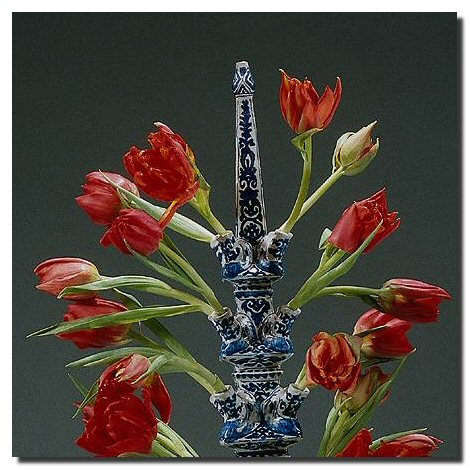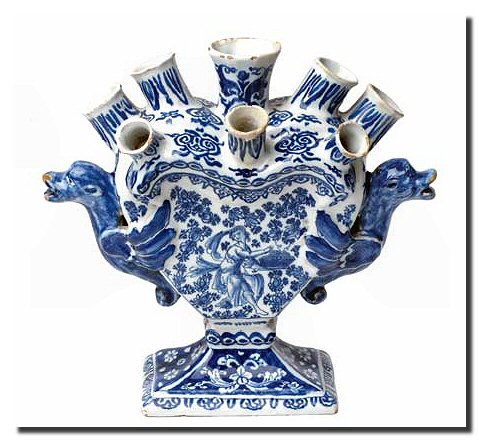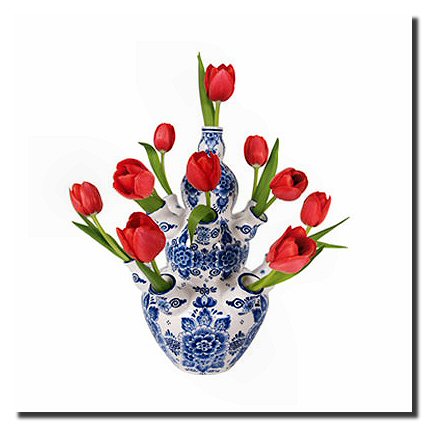|
Blue Delft-ware Flower Pyramids and Tulip Vases In 1593, no Dutchman had ever seen a tulip. In the 400 years since, the Netherlands has become synonymous with this most beloved of spring flowers. Tulips probably arrived (from Byzantium, now Istanbul,Turkey) in the autumn of 1593 and soon became a luxury good sold to courtiers, country gentlemen and rich merchants. These luxury and expensive flowers were often put in special and expensive vases. Those vases were the most striking products of the Blue Delft-ware industry in the 17th century.
(click on picture to enlarge)
Several types of tulip vases can be distinguished * Simple, low flat vases having an oval or heart-shaped belly. These especially served for being placed on tables or low cupboards.
* Round tulip vases with or without several loose dishes. The large specimens solely served as showpieces. * Pyramid-shaped tulip vases. These were the largest show-vases. A well-known specimen is more than two meters high. They are composed of several loose dishes, and form a unique appearance of the Delft’s blue faience. (click on first picture) * Finally, there are also tulip vases in all kinds of fantasy shapes.
These tulip vases however were not only used for tulips, but for other flowers as well. In general the tulip vase can be characterised as a vase which has several little spouts into which flowers can be stuck.
The Decoration
Blue Delft-ware During the Dutch Golden Age, (17th century) the Dutch East India Company had a lively trade with the East and imported millions of pieces of Chinese porcelain in the early 1600s. The Chinese workmanship and attention to detail impressed many. Only the richest could afford the early imports. Although Dutch potters did not immediately imitate Chinese porcelain, they began to do after the death of the Wanli Emperor in 1620, when the supply to Europe was interrupted. Delftware however is no porcelain (china) but tin glazed pottery (earthenware) made in the Netherlands (Delft was the main producer) from the 16th to the 18th century. Delftware in the latter sense is a type of pottery, in which a white glaze is applied usually decorated with metal oxides.
For more info about the blue Delft-ware
Tulipmania In the course of the seventeenth century the Netherlands fell under the spell of tulip mania. An unprecedented speculative trade in tulip bulbs ensued: bulbs were bought and sold without the traders even seeing them. At the height of the rage, some bulbs were commanding prices equivalent to the cost of a house on one of Amsterdam's canals! Tulips from the Haarlem region were especially popular. After reaching a peak in 1636-1637, the tulip trade collapsed and many of those involved were left penniless. Nevertheless, the flower remained popular and even became a national symbol.
For more info about the tulipmania
Sources: Wikipedia, dirtgardener.com,
ceramic-miniature.nl,
|


